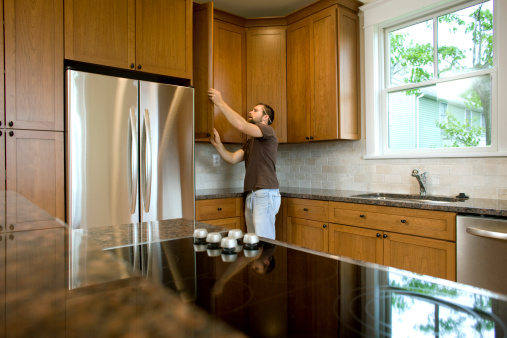
Buying a house, whether new or old, is incredibly exciting. I remember walking around at my first place after I’d signed on the dotted line with total butterflies in my stomach thinking ‘OMG, this is mine! Mine!’ It’s a major investment, all the more huge when you’re entering the market for the first time.
Not only is it a huge financial investment but also one of time. When you buy a house, whether to live or to rent, you are making a commitment to that property for a number of years. As such it’s of utmost importance to make sure that during that vital first inspection you have checked for major costly problems that could bite you later. Moving in only to have the plumbing fail on you or to discover major structural damage in the roof is not only gutting, but it could also push you over the debt line and take away your new-owner joy.
Even if it's brand new inspect it thoroughly! Human error and damage can still be present.
Look for these warning signs and make sure that you have either specified they be repaired in your contract or you’re willing to wear the cost before you buy. If you're concerned it pays to hire a professional building inspector.
1) SAGGING CEILINGS
Double check all the ceilings for a tent or parachute appearance. This is a sure sign of leaks and costly structural repair work.
2) CRACKS IN THE WALLS
Walk around and examine all the walls carefully for both large cracks and hair thin lines, particularly around doors and windows. Obvious cracks can be a sign of the foundations shifting and other major structural problems that need to be professionally inspected by building inspection services and indicate major bills. Hair thin cracks can be a problem of incorrectly applied wall plastering and over time the plaster will continue to crack and break away.
3) LOOK FOR DAMP
Check inside cabinets in wet areas, scan for peeling wallpaper, bubbling paint and window condensation. If it smells of mildew or comes away damp you’re likely facing leak problems, water damage and plumbing repairs. If there is mould or the shadow left by recently cleaned mould you could face the cost of hiring a professional mould remover. Check ceilings and walls backing onto bathrooms for stains or corrosion, a costly cosmetic repair.
4) FENCES
Walk around and inspect the condition of shared fences. They can be expensive to repair, and a damaged fence also provides security concerns and is useless for containing children or pets. If it’s damaged asbestos the removal costs can be even higher and prove a health risk. Finally fences can present a difficult political problem with neighbours given the shared property boundary. Speaking as someone who faced a prolonged and hostile negotiation over the removal of a shared boundary fence, this is something to be avoided at all costs!
5) GUTTERS
Inspect gutters for rust and damage from corrosion. You don’t want to have to replace them in a hurry and broken gutters can cause serious roof leaks and wall damage.
6) CHECK THE PLUMBING
Turn the taps on and flush the toilet if you can. Rumbling and banging in the pipes or low water pressure indicate a plumbing bill in your future.
We might think we know the signs to look for but they can be easy to overlook and it pays to be thorough in your inspection or to hire a professional building inspector. I disregarded some peeling paint as being a bad DIY patch of the former owners, only to find a few months down the track that it was the sign of a leaking shower. Take a checklist and be polite but methodical in your checks to ensure that dotted line doesn’t cause disappointment down the track.
- Em from the LookLocalWA team
Hi there,
Would you like to receive home decor
ideas and DIY tips to your inbox?
Subscribe to our mailing list!

